Protected Under
Antiquities Act 1975
31°35'18.8"N 74°18'45.5"E
![]()
On the UNESCO World Heritage Site List
Antiquities Act 1975
Alamgiri Gate's massive central arch was specifically designed to allow the emperor’s elephant-mounted caravan to pass through
The Best Time to Visit Punjab Province is Year long as it has bearable Cold winters and Hot Summers. However, Summers can get really Hot and precautions are recommended during Daytime visits.

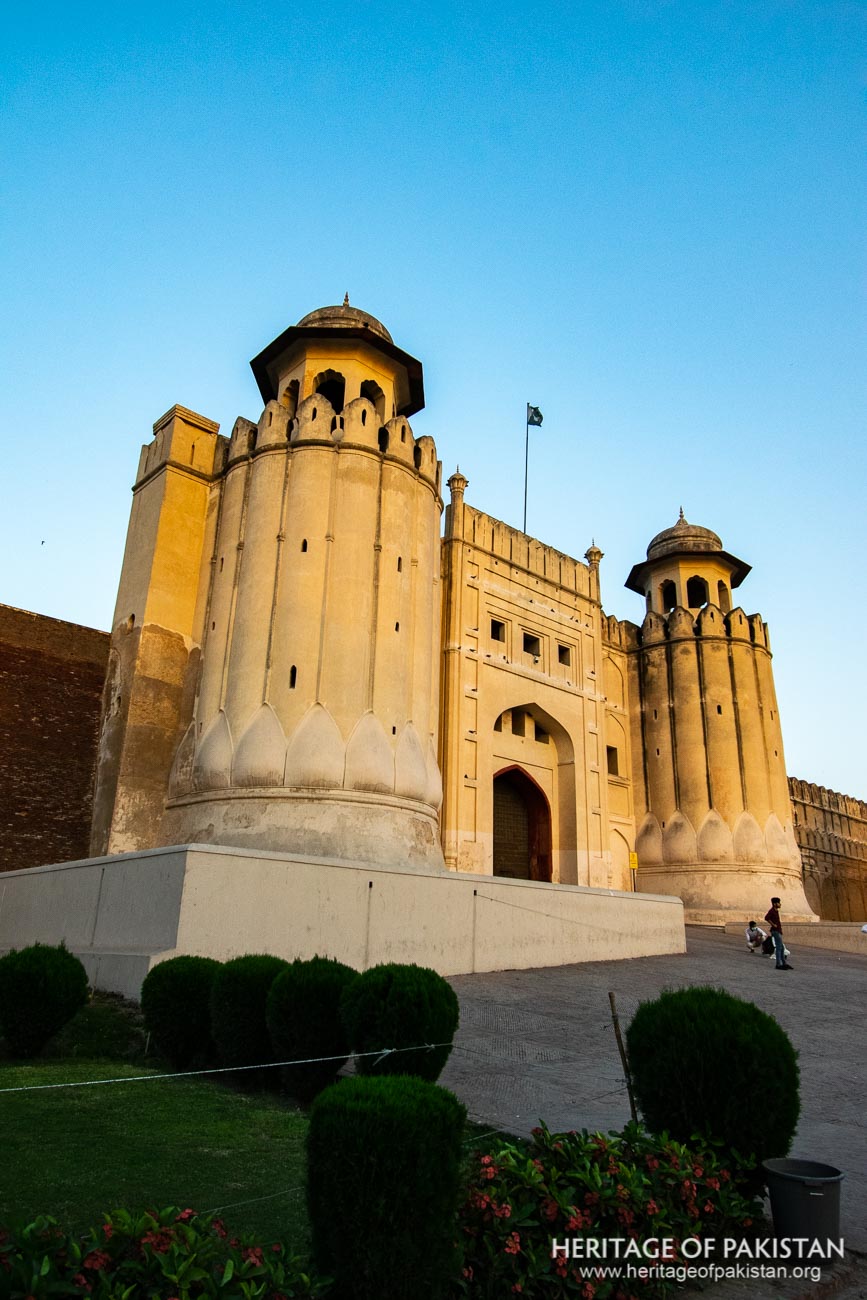
The Alamgiri Gate of the Lahore Fort stands as one of the fort’s most iconic and recognizable architectural elements. Situated on the western wall of the fort, it opens towards Hazuri Bagh and directly faces the Badshahi Mosque, creating a visually striking and historically significant spatial alignment. The gate was constructed under the orders of Mughal Emperor Aurangzeb Alamgir during the same period as the Badshahi Mosque, specifically in the years 1673–1674 AD. It is notably the only structure within the Lahore Fort attributed to Aurangzeb Alamgir and represents the final major addition to the fort during the Mughal era.
The gateway has witnessed a series of pivotal historical developments. It played a key role during the Sikh War of Succession, serving as a strategic point of access. During the British colonial period, the gate was sealed with brickwork due to concerns that it could potentially be used by locals against the colonial administration. Additionally, historical accounts suggest that the gate was destroyed during a conflict between the Sikhs and the British, and was subsequently reconstructed by the British authorities.
Following independence, the gate was reopened on 18 November 1949 by the then Governor of Punjab, Sardar Abdul Rab Nishtar, in a formal and ceremonious event. In recent times, the Alamgiri Gate underwent conservation efforts by the Walled City of Lahore Authority in 2021, ensuring the preservation of its architectural and historical integrity.
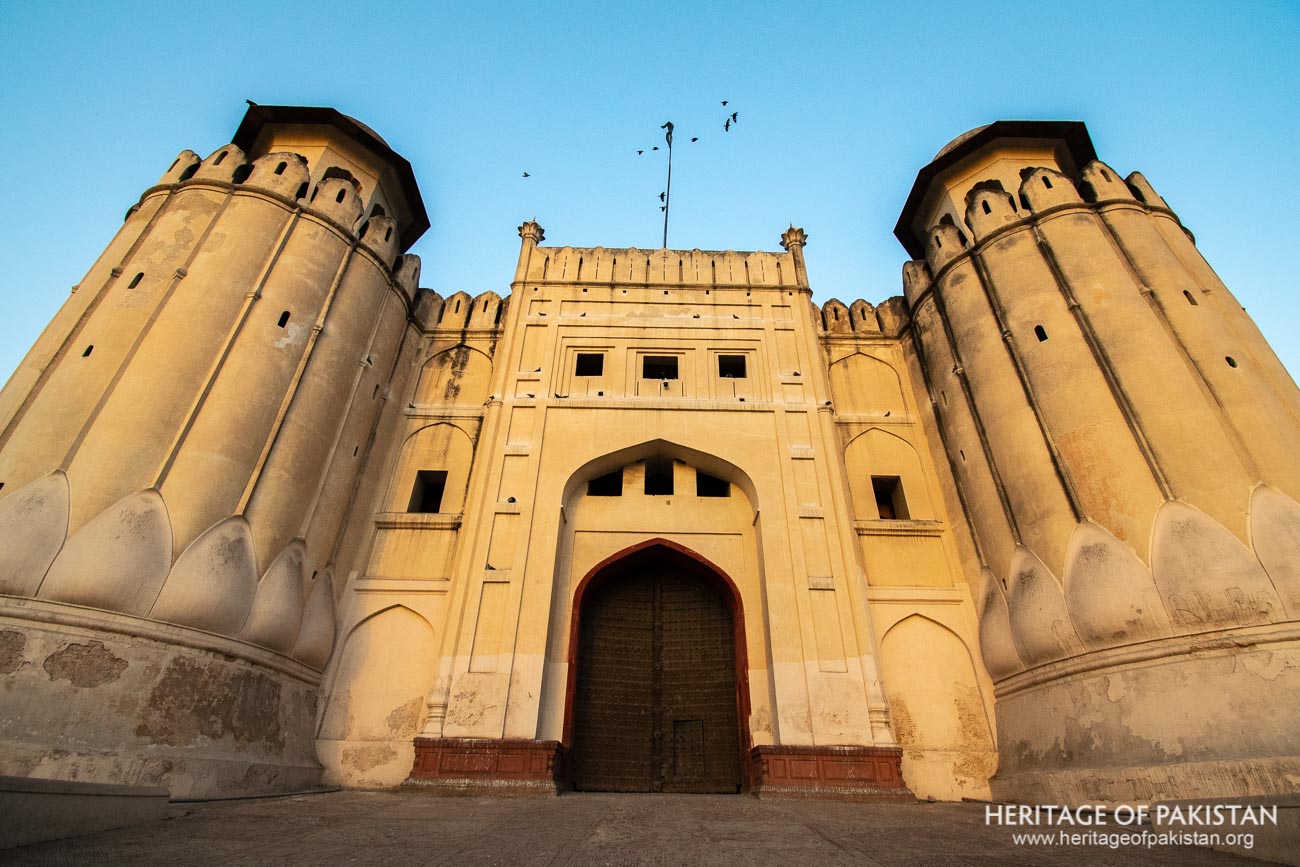
Alamgiri Gate was built by Aurengzeb Alamgir

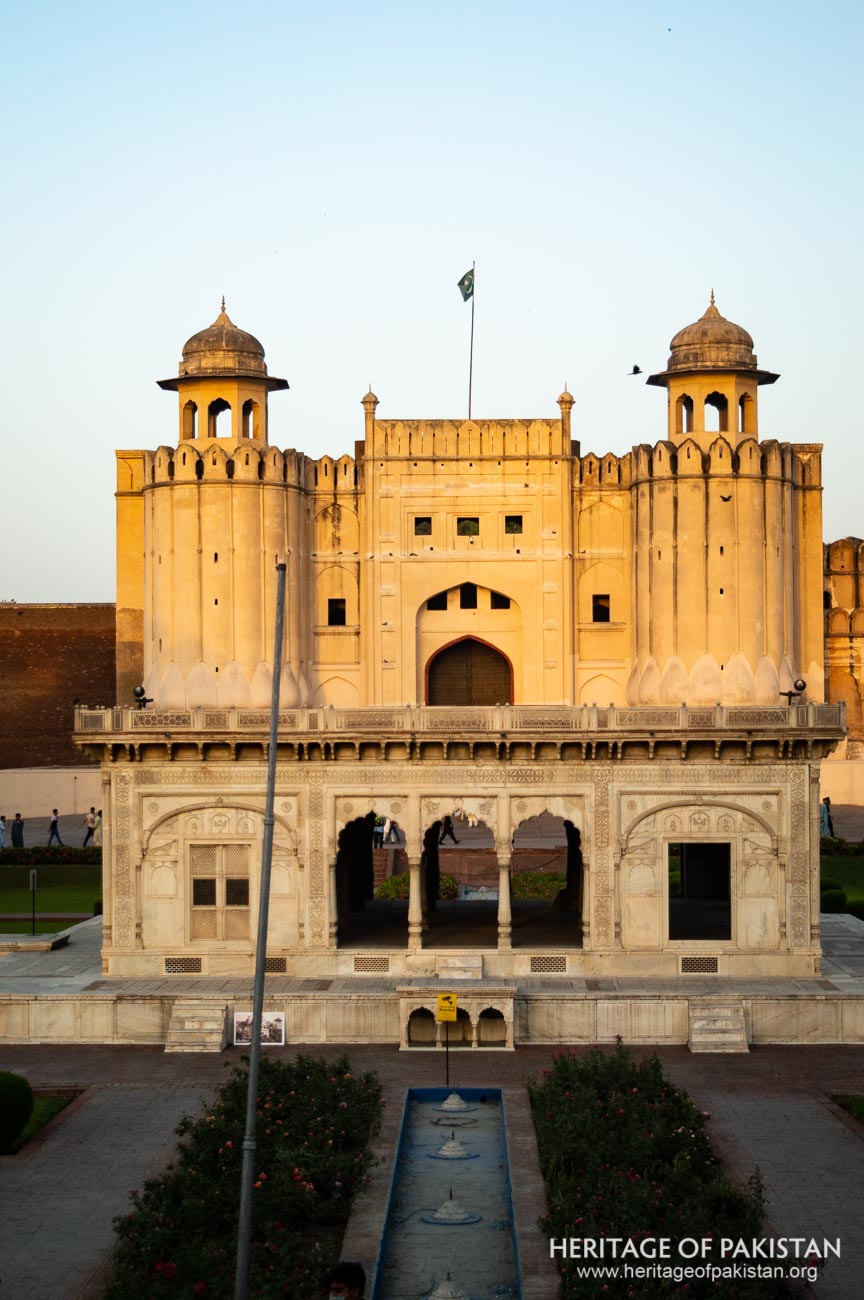
Hazuri Bagh Baradari and Alamgiri Gate, Lahore Fort
The Alamgiri Gate is a prominent architectural feature situated on the western wall of the Lahore Fort. It directly faces the eastern entrance of the Badshahi Mosque, with the Hazuri Bagh positioned in between. The spatial alignment of the gate and the mosque's entrance suggests they were likely planned together and constructed concurrently. Both structures were commissioned by the Mughal Emperor Aurangzeb Alamgir, and their construction dates back to the late 17th century.
The Alamgiri Gate is located on the southern side of the Barood Khana and to the north of the Shahi Bawarchi Khana. This monumental gateway is flanked by two large, boldly fluted semi-circular bastions. The base of each bastion features a lotus flower design, with its petals aligned with the grooves of the fluting above. The tops of the bastions are adorned with pointed merlons and crenels. Each bastion is crowned with a chhatri—an octagonal, domed pavilion that reflects the baradari style. These pavilions have eight-sided chajjas (projecting eaves), a pointed dome, and open or screened arches supported by pillars. This style of domed kiosk is a recurring element in Mughal architecture and is considered one of its signature features.
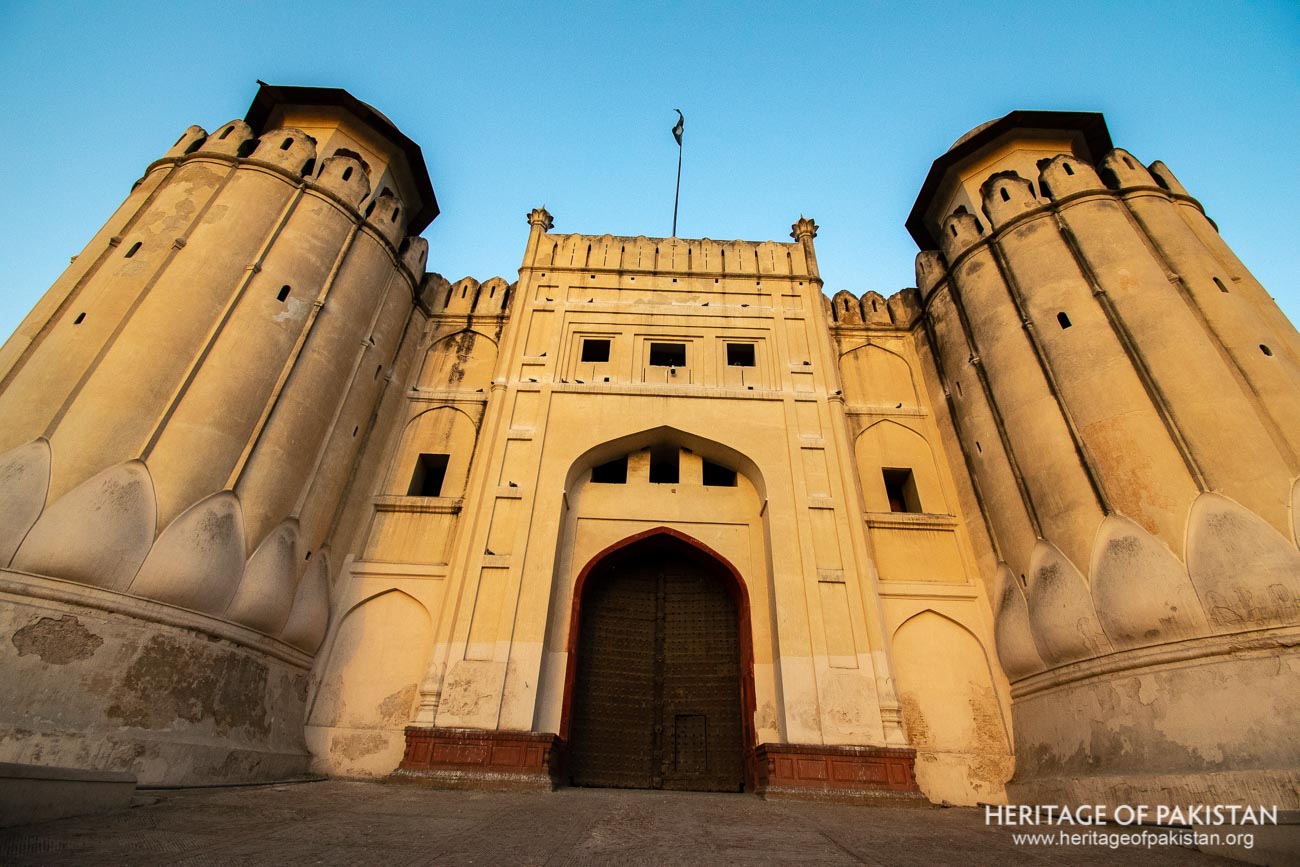
The central feature of the Alamgiri Gate is its large arched entrance, designed to accommodate the emperor's elephant-mounted caravan. The gateway is set within a four-centered arch, which is itself enclosed in a larger niche of similar shape. This composition represents the ‘iwan’ style of entrance, characteristic of Timurid architecture and later adopted by the Mughals. A prominent projected pishtaq frames the entrance, embellished with proportionally divided recessed niches and decorative merlons along the upper edge. Flanking the pishtaq on both sides are two slender minarets that extend slightly above the structure.
The entire structure is built upon a raised plinth, accessed by a gently sloping ramp that connects the level of the Hazuri Bagh to the central entrance of the gate. Above the gateway, a solid parapet wall features battlemented detailing. At the center of the gate, the national flag of Pakistan is hoisted.
Upon entering through the Alamgiri Gate, visitors step into a large central square hall. From this hall, a staircase provides access to the upper storey of the adjacent buildings, indicating the integration of the gate within the broader functional layout of the Lahore Fort.
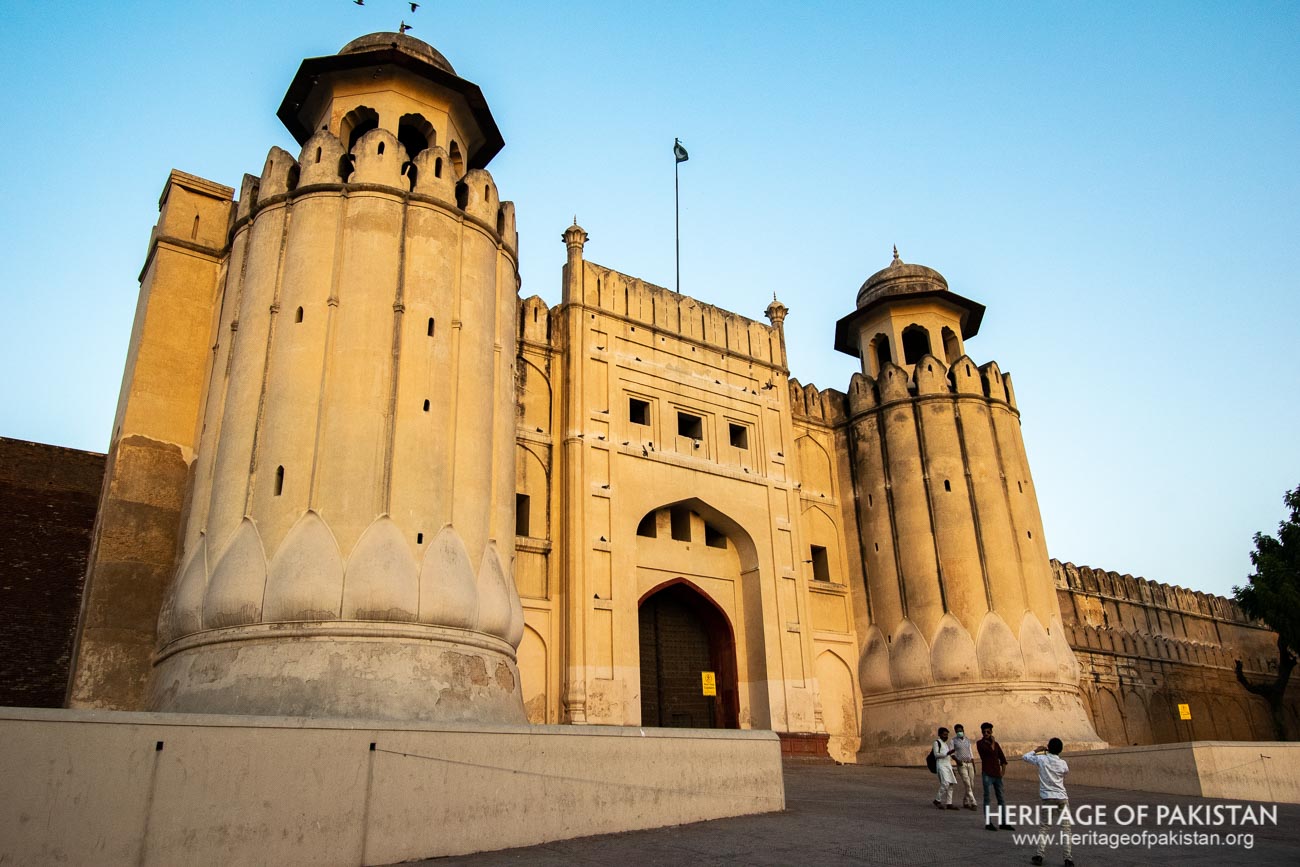

Discover the Alamgiri Gate image gallery and immerse yourself in photographs

All Photographs by Syed Noor Hussain and Sania Azhar.
All Rights Reserved. Photos may be used for Non-Commercial, Educational, Artistic, Research, Non-Profit & Academic purposes.
Commercial uses require licensing agreement.


Add a review